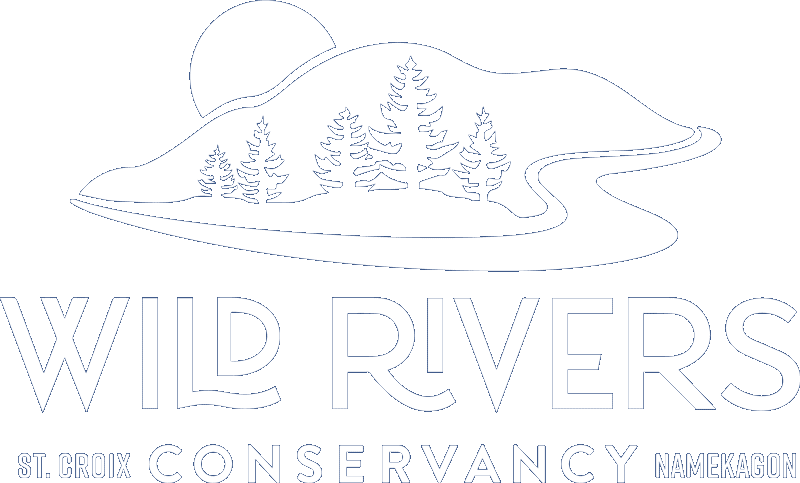
How Is the Lower St. Croix Riverway Protected?
In 1972, the Lower St. Croix River became one of our country’s few national Wild and Scenic Rivers. As a result of this unique designation, Minnesota and Wisconsin adopted zoning standards for a strip of land along the St. Croix River’s shores. This Riverway overlay zone consists of building restrictions designed to protect water quality, provide habitat for birds, fish, and wildlife, and maintain a relatively unspoiled view for the millions of visitors drawn to the Riverway.
Our Land program works to preserve the natural beauty of the Lower St. Croix Riverway through partnerships with local governments, landowners, and realtors. Through our education and outreach efforts, we strive to increase awareness of the Riverway regulations and provide helpful resources that encourage consistency and transparency of land-use rules and decisions throughout the River corridor.
Explore the resources below to learn more about the Lower St. Croix Riverway’s protections, overlay zoning, and best practices.
Where Is the Riverway Boundary?
The Riverway Boundary spans 52 miles from Taylor’s Falls/St. Croix Falls to Prescott/Hayward. On average, the boundary extends a quarter-mile out from the river’s edge. However, in some places the boundary is wide, and in other places the boundary can be very narrow.
Explore this map with the GIS layer of the Riverway boundary. Is your home in the Riverway boundary? Are there any scenic easements on your property? If so, make sure to contact the right people to learn more about your property.
What are the Riverway Regulations?
Click through the Landowner’s Guide to the Lower St. Croix Riverway below to learn more about the protections and regulations in the Riverway boundary (specific to Minnesota, but still a great overview for Wisconsin).
Contact your local zoning administrator to learn how your property is zoned or if there are any other restrictions on your property. Familiarize yourself with these protections before investing in any development plans!
What if I want to make changes to my property?
Understanding the rules is just the first step in a long and sometimes complicated process. Here are five things you can do to save time and money on rebuild/remodel projects in the Riverway (and to help the River, too! – win, win.).
The Best Practices for Zoning Applications resource outlines the steps necessary to change your property, from thinking about a remodeling project to properly documenting it with your local government. It is a workbook designed for landowners to document information about their property and take notes at their pre-application meeting. For a paper copy, contact your local government or the Wild Rivers Conservancy.
Who To Contact
Contact your local government (city administrator or, if property is in a township, the county planner), the Department of Natural Resources (DNR), or the National Park Service (for scenic easements) before undertaking any work on your property to learn about Riverway zoning regulations related to your proposed activity or project. For more information or questions about the Riverway rules, contact the DNR area hydrologist.
National Park Service (for scenic easements): 715-483-2261
Lands Program Manager: Laura Hojem. laura_hojem@nps.gov
Minnesota Contacts
MN DNR (Properties in Washington County): 651-259-5754
MN DNR Hydrologist: Dan Scollan. Daniel.scollan@state.mn.us (651-259-5732)
MN DNR (Properties in Chisago County): 763-689-7100
MN DNR Hydrologist: Craig Wills. craig.wills@state.mn.us
MN DNR Easements: 651-259-5599
Daniel Golner: Daniel.Golner@state.mn.us
Afton: 651-436-5090
Bayport: 651-275-4404
Planner: Sara Taylor. staylor@ci.bayport.mn.us
Lakeland: 651-436-4430
Lakeland Shores: 651-436-1789
Lake St. Croix Beach: 651-436-7031
Marine on St. Croix: 651-433-3636
Oak Park Heights: 651-439-4439
Scandia: 651-433-2274
Stillwater: 651-430-8800
St. Mary’s Point: 651-436-1099
Taylors Falls: 651-465-5133
For townships, contact your county:
Washington County: 651-430-4307
Planner: Kurt Howard. Kurt.howard@co.washington.mn.us
Chisago County: 651-213-8382
Click here for information about the Wild and Scenic Lower St. Croix in Minnesota.
Wisconsin Contacts
Wisconsin DNR: 920-755-1521
Kay Lutze: Kay.Lutze@wisconsin.gov
Hudson: 715-716-5741
Planner: Mike Johnson. 715-716-5744. mjohnson@ci.hudson.wi.us
Prescott: 715-262-5544
Osceola: 715-294-3498
St. Croix Falls: 715-483-3929
For townships, contact your county:
St. Croix County: 715-386-4672
Planner: John Hilgers. john.hilgers@sccwi.gov
Polk County: (715) 485-9248
Zoning Administrator: Jason Kjeseth. jason.kjeseth@co.polk.wi.us
Click here for more information about the Wild and Scenic Lower Riverway in Wisconsin.
Resources
One-click to Download PDF versions
- Landowner’s Guide to the Lower St. Croix Riverway
- Best Practices for Zoning Applications in the Lower Riverway
- Earth-tone Color Swatches
- Panel card: Introduction to Riverway Protections and Contacts
- A Guide to Raingardens
- A Guide to Native Plants
- Managing Your Bluffland
Print-ready versions:
One-click download PDF print-ready versions
If you are interested in paper copies of the above resources please contact us. If you’d like to print them on your own, please use the documents below (printing instructions included).
- Landowner’s Guide to the Lower St. Croix Riverway Print Version with Bleeds
- Best Practices Doc with Bleeds
- Earth-tone Color swatches with bleeds
- Panel card: Introduction to Riverway Protections and Contacts Print version with bleeds
- Instructions on how to print Landowner’s Guide to the Lower St. Croix Riverway and panel cards
